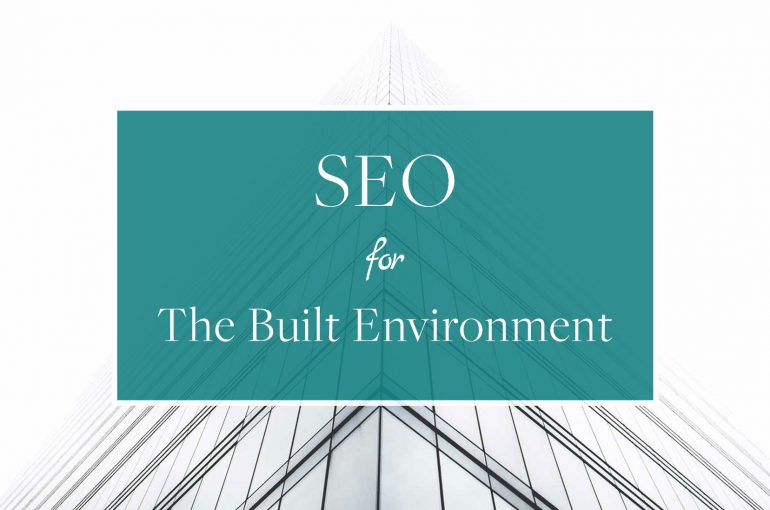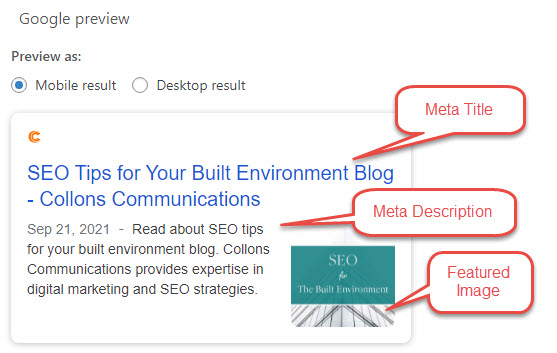
SEO Tips for Your Built Environment Blog
Do I really need a blog?
Is anybody really going to read what I wrote?
I can’t figure out what to say!
Does any of this sound familiar? When I talk to clients about blogging I rarely get an enthusiastic, “YES, let’s do this!” While I really enjoy writing and fixating on how to get my blog posts to achieve maximum search engine optimization, I get that not everyone is like me. But it is important to pay attention to SEO practices if you want customers and manufacturers to find you online.
SEO Tips for Your Built Environment Blog
To begin, let’s address that first question, “do I really need a blog?” In short, the answer is, “yes.” Pages on a website tend to be static. Writing blog posts are different because you have the opportunity to continuously put new, interesting information on your website. As SEO expert, Neil Patel says, “It’s no secret that Google loves fresh content.” Google will begin to consider you an expert and rank your website higher when you address specific topics regularly.
Tip #1 Feed Google
My two favorite plugins for WordPress SEO are Yoast SEO and Rank Math. You can do many things to achieve excellent organic SEO with them, including feeding Google a key phrase, post title, and meta description for every post.
A keyphrase is a small group of words that describes the most relevant topic in your post. It should be a phrase that a potential client would type into a Google search and be sprinkled throughout your post content. For example, my keyphrase in this post is, “SEO tips for your built environment blog.” If you count, you can see that I’ve used it five times which is an appropriate amount for the length of this post.

Next, let’s look at the meta title for your post. When I say meta post title, I’m not referring to the title of your post. You can see from the reference image here where the meta title is. Yoast’s SEO plugin for WordPress gives you an opportunity to feed Google a specific meta title. It should:
- Ideally, be 55-65 characters in length and no more than 70.
- Grab the reader’s attention
- Contain your keyphrase
- Accurately describe the content of your post
For example, the title of this post is, “SEO Tips for Your Built Environment Blog” but the meta title I’ve specified is “SEO Tips for Your Built Environment Blog – Collons Communications.” I like to end all of my blog posts with a separator and the name of the website. That comes to 65 characters. My keyphrase is, “SEO Tips for Your Built Environment Blog” which is contained at the beginning of my meta title and accurately describes what this post is about.
Finally, the meta description is the short paragraph under your meta title. Your meta description length should be between 130-150 characters so that your whole description appears on both desktop and mobile. The meta description for this post is “Read about SEO tips for your built environment blog. Collons Communications provides expertise in digital marketing and SEO strategies.” I’ve included the exact keyphrase, the website name, and two other keyphrases that someone might use to find my post – “digital marketing” and “SEO strategies.” The total character count is 135.
The featured image is a feature that most premium WordPress themes come with. It may show up in various places such as the blog roll, top of the page, and in sharing on social media and mobile devices.
Tip #2 Optimize your images and videos
Any SEO expert will tell you that your website speed matters to both search engines and to the people who visit your website. What slows down your site? Besides a subpar server at a shared host, images and videos are two major culprits.
There are very few reasons to run large video files directly from your server. I recommend that you create a Vimeo or YouTube account and upload and run any videos you’ll be using on your website through them.
Images should be optimized before you upload them to the WordPress media library. They should be no more than 2000px wide or tall unless they are going to be displayed as a full background image on a page. You can optimize images even further by using a plugin like Smush.

The other opportunity for a boost in your SEO is to assign alt tag text to images that appear in your post. For example, on this image, I’ve assigned the alt tag text “SEO for the built environment.”
Tip #3 Write about something that will help your audience
If you are struggling with the motivation to write, your follow-through will be much better if you choose a topic that you feel is helpful to your readers. For example, let’s say that you are a company that manufactures safety products for childproofing your home. Your customer service reps field several calls a day about how to properly install a popular baby gate. A step-by-step tutorial would be an excellent topic for a blog post.
Tip #4 Choose the right keyphrase for your blog post
Choosing the right keyphrase for your blog post is also important. But how do you find the right keyphrase? If you really want to dig into how particular keyphrases rank on Google, you can also use the keyword tools mentioned here.
It also helps to get into the head of a potential customer. Let’s use the example of our baby gate, “Best Baby Gate.”
Here are some potential phrases someone might search to find the post:
- How to install Best Baby Gate
- Best Baby Gate install mistakes
- Can’t figure out how to install Best Baby Gate
Figure out three or four of these for your topic and see what comes up when you search for them. By scrolling through and analyzing what your competition has done, you will get an idea for the best succinct keyphrase.
The other mistake that people make when choosing a keyphrase for their blog posts is to pick something that is too general or too competitive. A keyphrase like “install a baby gate” for a blog post isn’t specific enough and is a much more competitive phrase than something longer. For more on this topic, check out Yoast’s post on long-tail keywords.
Tip #5 Be patient and play the long game
Most SEO experts tell their clients to wait 4-6 months to see the full results from a good organic SEO campaign. If your website is new, you may need to wait even longer. Don’t give up on blogging! After writing a post make sure you share it on all of your social media platforms and don’t get discouraged if you aren’t getting the “likes” you’d hoped for. Remember that blogging is both for reaching our target audience and for search engines.
Tip #6 Final simple SEO rules
Here are some other simple rules to follow for your blog posts.
- Blog posts should contain at least 300 words
- Paragraphs should be short
- Use your keyphrase in one of your paragraph headings
- Include external links to authorities on your topic
- Include internal links to other relevant info on your website
- Don’t use a keyphrase you’ve used on another post
- Use Yoast’s tool to see what you’ve done well, and use their suggestions to improve. Don’t stop until you see a green light.

Author Cindy Bouchard, Flip Flop Freelance
Cindy Bouchard, web design and organic SEO expert is a part of the Collons Communications team helping clients increase their online presence and look good doing it.
